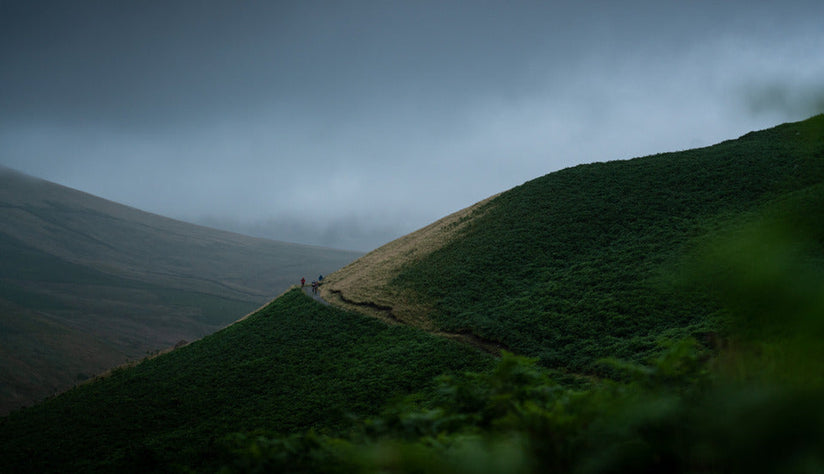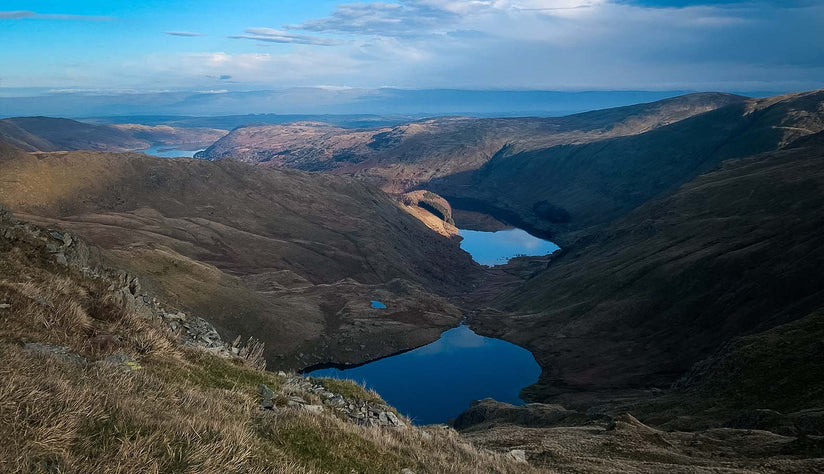The first official Spine race took place in 2012 with only 15 people on the start line. Back then, there were no races utilising the Pennine Way, no way to track the runners and many didn’t believe it was even possible to pull off such an event.
Fast forward 12 years and the Spine now welcomes over 150 participants each year to take on a route that has since gained global recognition. Not only that, but over a million people now tune in to track the participants online as they take on the non-stop race.
But what makes the Spine so alluring amongst ultra runners looking to push their limits? And where did it all begin? We caught up with Phil Hayday-Brown, one of the founders of the event to find out more.

The Spine origins
Prior to setting up the Spine, founder Phil was part of a team of people organising an event known as the Polar Challenge, based in Canada. Covering 320 miles, it was a challenging multi-stage race to the Magnetic North Pole. In 2010, Phil began thinking about embarking on a new challenge and he had a crazy idea…how could he bring a similar kind of event to the UK?
After lots of research, and the help of his friend Scott Gilmour, Phil discovered the 263-mile Pennine Way, which boasts some of Northern England’s most varied and challenging terrain. Not only this, but at that time the Pennine Way wasn’t being used for any events of this kind. Bingo.
“We wanted the UK event to mimic cold, polar environments, where you can find sheet ice and snow blizzards. The reality was, winter weather on the Pennine Way can be extremely varied. Sometimes you need to get your snow shoes out, but more often, you get bogs and a lot of mud.” Phil Hay-day Brown, Spine Event Founder.
The idea conceived, all that was needed was a suitable name for the race. As with all genius ideas, the Spine was suggested at a drunken brainstorm in the pub one night. Inspired by the Pennine Way itself, a natural upland mass otherwise referred to as the ‘backbone of England’, that stretches North from Derbyshire, all the way up to Scotland.

The inaugural race
In 2012 the stage was set for the first official Spine Race. But many remained unconvinced it was going to be possible to pull off such a challenging, non-stop run.
That first event only had 15 people on the start line, split between 2 races (the full length edition and a shorter challenge route, finishing at Hawes). Only 3 racers finished the route: Steve Thompson and Gary Morrison came joint 1st, crossing the finish line together (a common sight in the years to come, as racers with similar pace team up to help each other out!), followed by Mark Caldwell in 3rd place.
“Those first 3 brave racers proved it could be done and they inspired many more determined runners to take on the challenge. The following year we welcomed 50, the year after that 150. It’s so popular these days we have a waitlist to take part.”
The evolution of the Spine
Since those early days, things have also gone digital, opening up the experience to so many more people. In 2014 live GPX trackers were introduced, becoming a total game changer. These nifty gadgets allow friends, family and general enthusiasts to see how the participants are getting on via an online portal. This became so popular it crashed the whole system that first year. Thankfully, the initial bugs were ironed out, with upwards of a million now tuning in each year.
Due to its popularity, the race has also expanded and there are now 4 ways to take part, of varying lengths. This includes an ‘entry-level’ option of 43 miles (Spine Sprint), alongside a recently added North Challenger option, from Hawes to Kirk Yetholm. There’s also a summer edition, to accompany the classic winter Spine.
Spine legends
It takes a certain sort of character to take on the Spine and a perfect storm to win! The non-stop nature of the race, plus the other expedition-style skills you need combine to make it a truly unique and challenging experience. Self management and preparation are key. If you can’t do this, it’s just not going to happen. Then there’s the sleep deprivation, which has a big effect on people.
To be able to push yourself to such extreme limits requires an incredible amount of both physical and mental strength. Especially when you could be running in the dark by yourself for 16 solid hours. It’s that next big crazy challenge for runners and what makes it such a lure for athletes from across the globe.
Some moments that stand out over the years include racer Eugeni Rosello Sole running in knee deep high snow, huge ice balls forming on the top of his shoes. These were eventually smashed off with the help of the race organisers. Then there was the quick 30 second power nap taken by Pavel Paloncy on a walking style with all his kit on.
The undeniable legend of the race goes to Jasmin Paris, who smashed a whopping 12 hours off the previous record in 2019. Not only this, but she was also expressing milk for her baby at checkpoints along the way. Rightly so, her story went viral.
“There’s a lot of self confessed ‘lone wolfs’ taking part but, as in the case of the inaugural race finishers, many people of similar paces team up along the way. Everyone taking part has a similar mentality to see how far they can test themselves."

Spine Route Highlights
The Pennine Way provides an incredibly varied and challenging journey for participants. The northern section is completely different to the first and from Hawes it feels a lot more noticeably remote. Along the way there are also various checkpoints that racers can stop at for some respite. These are places to refuel with a tasty hot meal, bed down for a short while to catch up on some sleep and also to check in with a qualified medic.
Cross Fell marks the highest point of the race and Greg’s Hut bothy here has become a particularly notorious checkpoint. John Bamber is the chap in charge here and his homemade ‘noodle bar’ (featuring home grown chilli's) has become somewhat of a spine tradition. A little further along in Alston (England’s highest market town) participants will also be greeted by a delicious homemade lasagne that has become the stuff of many racers’ dreams.
Whilst dot watch opens up the race digitally, there’s still one section of the Spine where the trackers don’t work. Between Middleton-on-Teesdale and Dufton, the route goes past Cauldron Snout waterfall, before heading on to High Cup Nick, a dramatic horseshoe with high cliffs. It’s a particularly beautiful stretch but one that can also be treacherous. It’s a place the SST (Spine safety team) monitors extremely closely, to ensure everyone makes it out okay.

What makes the Spine so special?
To this day the Spine remains unique in its non-stop nature. This, combined with the need for navigational skills, challenging terrain, and short daylight hours is what makes it such a difficult ultra run. The Dragons Back race in Wales is probably the closest thing to it. But even that allows you to get a good night's rest in between the key stages.
There’s also a strong ‘spine family’ feel - for both racers and the amazing volunteers who pitch in to make the event a success. There’s a high level of care of participants and it’s a big part of why racers keep coming back each year.

















